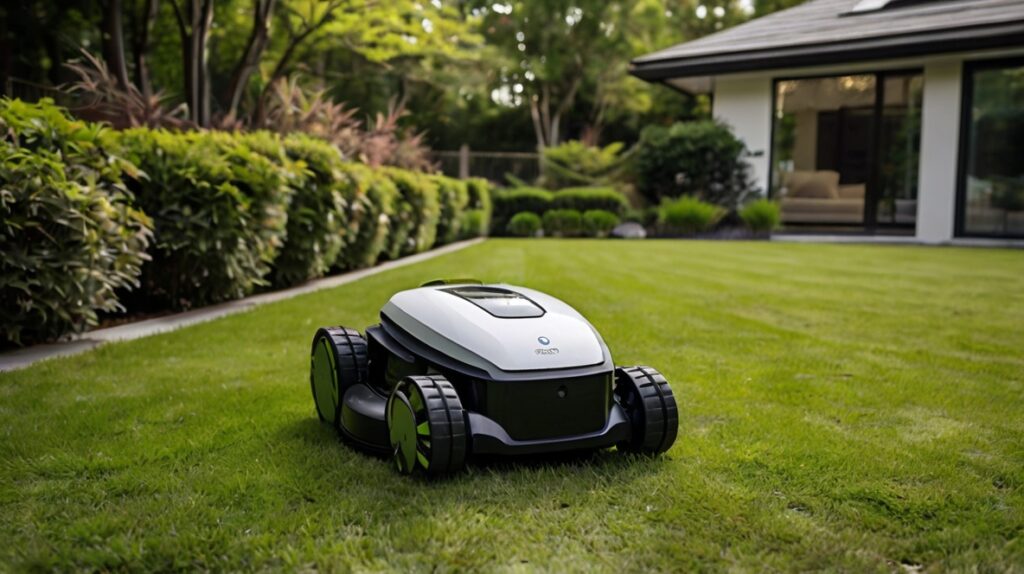This post may contains affiliate links. As an amazon associate I earn from qualifying purchases.
Why is My Grass Turning Yellow Despite Regular Watering?
Exploring Common Causes and Solutions
Maintaining a lush, vibrant green lawn is the goal of every homeowner. However, it can be frustrating to find your grass turning yellow despite your best efforts in watering.
The issue might not be your dedication but rather a variety of factors affecting your lawn’s health. In this blog, we will delve deep into the possible reasons behind yellowing grass and provide effective solutions to revive your lawn’s natural splendor.
“Simple lawn solutions darker green” Ad
Understanding Yellowing Grass:
Yellowing grass is a common concern that many homeowners encounter. It’s crucial to comprehend that grass turns yellow as a sign of distress, indicating that something isn’t quite right with its environment or care regimen. Let’s explore some potential causes in detail to gain a comprehensive understanding of this issue.
Insufficient Watering:
Paradoxically, even though you believe you’re watering your lawn regularly, it’s possible you’re not providing adequate hydration. Shallow watering doesn’t reach the grass’s root zone, causing the upper blades to dry out and turn yellow. To ensure proper hydration, it’s recommended to water your lawn deeply and infrequently. This practice allows the moisture to penetrate the soil and encourage deeper root growth, making your grass more resilient to changing conditions.
Soil Compaction:
Compacted soil can hinder water absorption and root growth, leading to yellowing grass. Heavy foot traffic, machinery, and even natural settling can cause soil compaction over time. To address this issue, consider aerating your lawn by perforating the soil with small holes. Core aerators and spike aerators are effective tools that alleviate compaction and enhance water and nutrient penetration, ensuring your grass receives the resources it needs to thrive.
Improper Mowing Techniques:
Mowing practices play a significant role in maintaining a healthy lawn. Mowing too short or too infrequently can stress your grass and turn it yellow. Scalping the lawn by cutting it too short exposes the soil to excess sunlight, leading to dehydration and yellowing. To prevent this, adopt the “one-third rule” – never remove more than one-third of the grass’s height during a single mowing session. This practice helps maintain the right balance between leaf surface and root system, promoting healthy growth and preventing yellowing.
“Simple lawn solutions darker green” Ad
Nutrient Deficiency:
Yellowing grass might be a sign of nutrient deficiency, particularly a lack of nitrogen. Nitrogen is vital for healthy leaf and blade development. Consider using a balanced fertilizer with a slightly higher nitrogen content to address this deficiency and restore the green hue of your lawn. Regular fertilization not only corrects nutrient imbalances but also contributes to overall grass health, ensuring it can better withstand stressors that lead to yellowing.
pH Imbalance:
Soil pH plays a pivotal role in nutrient absorption. If your soil is too acidic or alkaline, it can hinder nutrient availability, ultimately leading to yellowing grass. To address this issue, it’s advisable to test your soil’s pH and amend it accordingly. Adding lime can raise the pH, making the soil less acidic, while sulfur can lower it. By adjusting the soil pH to the appropriate range for your grass type, you’ll enhance nutrient uptake and alleviate the yellowing problem.
Pest and Disease Infestation:
Yellowing can also be attributed to pest infestations like grubs or diseases like fungal infections. These issues can disrupt the grass’s ability to absorb water and nutrients, contributing to its yellow appearance. Regularly inspect your lawn for signs of infestations or diseases, such as irregular patches or unusual discoloration. If you notice any such signs, it’s essential to treat them promptly with appropriate pesticides or fungicides. Taking proactive measures against pests and diseases can help restore your lawn’s health and vibrancy.
“Simple lawn solutions darker green” Ad
Environmental Stress:
External factors such as extreme heat, cold, or drought can subject your grass to environmental stress, causing it to turn yellow. To mitigate these stressors, consider applying a layer of organic mulch to insulate the soil. Mulch helps regulate temperature and moisture levels, creating a more stable environment for your grass’s roots. Additionally, ensuring consistent and adequate watering during periods of environmental stress can prevent yellowing and help your lawn maintain its green color.
Yellowing grass can be a perplexing issue, but armed with the right knowledge, you can take proactive steps to address and rectify the problem. From proper watering techniques to soil management, nutrient adjustments, vigilant pest control, and mitigating environmental stressors, a holistic approach can bring back the verdant vitality of your lawn. Remember, a beautiful lawn requires ongoing care and attention, so implement these solutions and witness the transformation of your once-yellowing grass into a lush, envy-inducing carpet of green that enhances the beauty of your outdoor space.
Ads>
[amazon_auto_links id=”6051″]
This post may contains affiliate links. As an amazon associate I earn from qualifying purchases.

